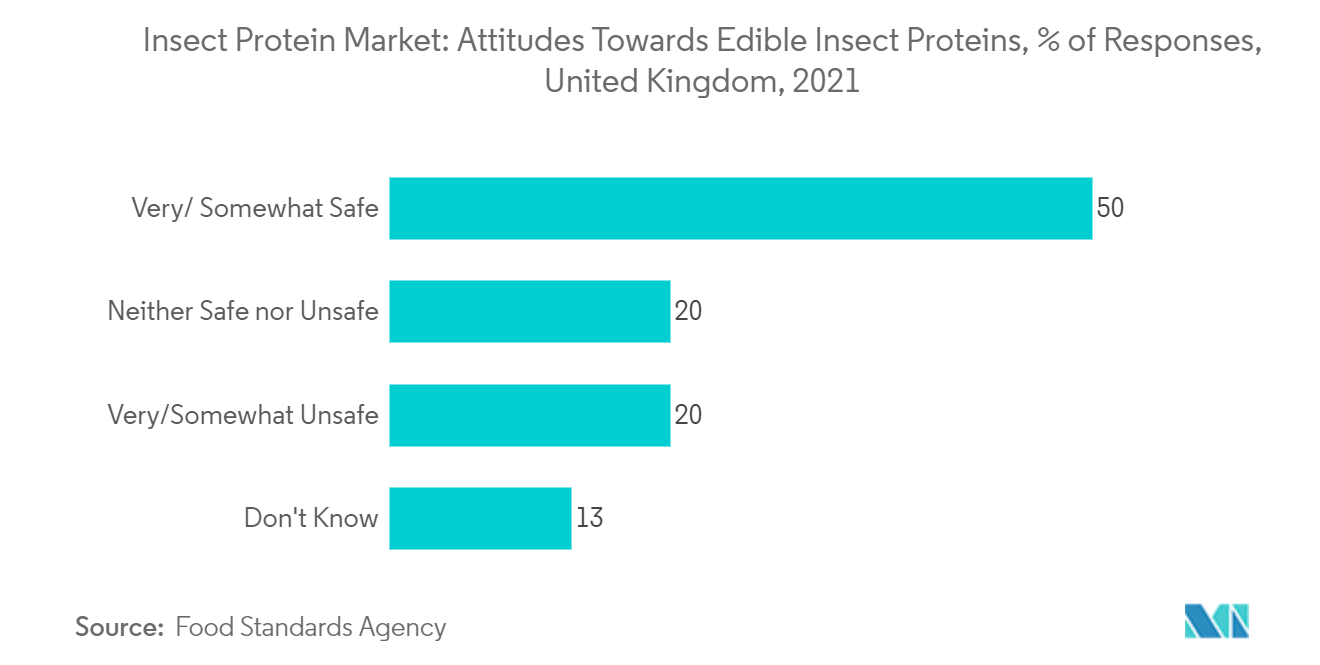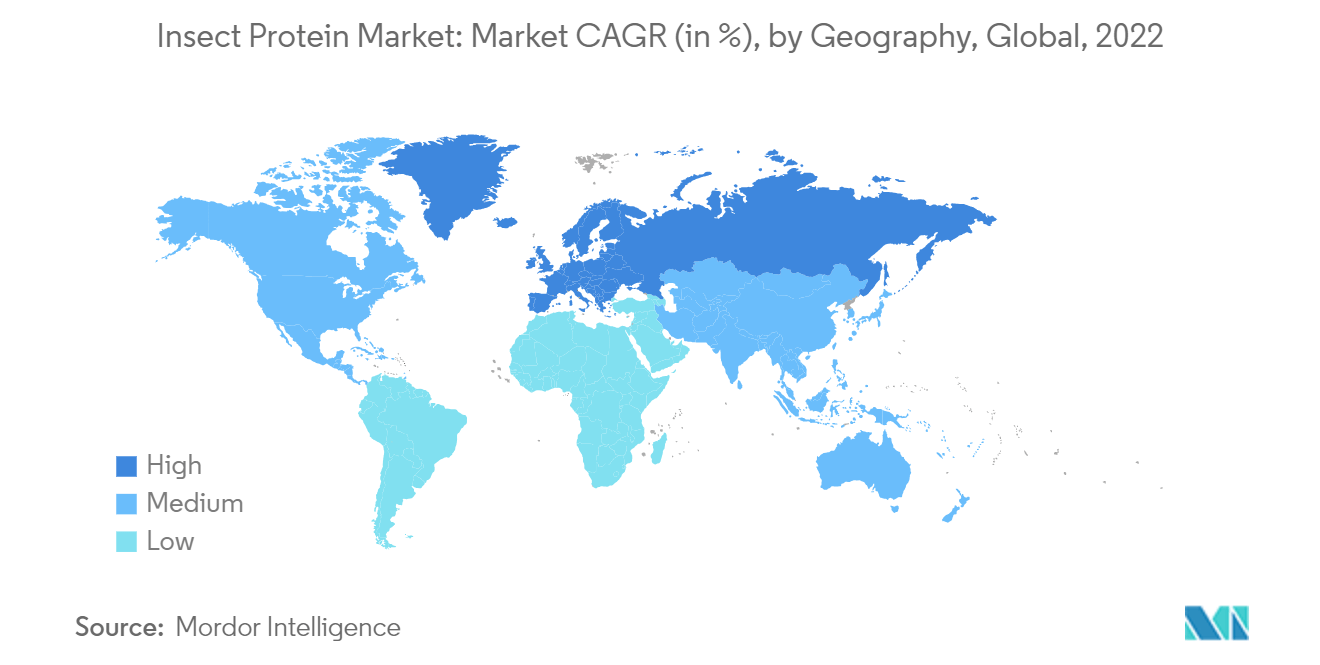Market Trends of Insect Protein Industry
Increasing Awareness About Insect & Other Alternative Proteins
- Insect protein has been gaining traction in the market as consumers have become more aware of various sources of protein and their benefits on health. Insect protein intake among consumers is increasing, with more attention being paid to the specific demand for protein for various health benefits. With increasing population and welfare, the demand for insect protein as a food-nutritional component has been rising over the past few years. The high protein trend is gaining traction and will continue to evoke interest in the upcoming years.
- Hence, many companies have been expanding the production of insect proteins and expanding their presence across various regions. For example, in March 2022, Singapore-based start-up Inseact opened an insect protein facility with advanced technologies to expand its production. Additionally, the company will be the first commercial-scale insect protein manufacturer in Malaysia in 2022.
- Various regions across the globe have been witnessing a rise in awareness about insect protein and the benefits of consuming it. According to a survey published by the Food Standards Agency in 2021 in the United Kingdom, 50% of the respondents believed that edible insects were very/somewhat safe, whereas only 13% of the respondents had no awareness of edible insects.
- The advantages of insect protein include more or comparable quantities of protein as well. It is claimed to have better digestibility than other animal and plant proteins, which has been constantly driving its demand in the food and beverage sector. Manufacturers have been offering various insect protein products to cater to the growing demand for the same in the global insect protein market.

Europe as the Dominant Region with Major Market Shares
- Europe is the dominant market for insect protein across the globe. The region has been considering insects as a sustainable, eco-friendly, and potential source of protein. Government initiatives and approvals for various insects as sources of protein for food, beverages, animal feed, and other applications have been playing a major role in driving the insect protein market across Europe.
- The European Commission authorized the 4th insect, Alphitobius diaperionus, the lesser mealworm in the market, as food in the year 2023. The lesser mealworm is the larval form of darkling beetles. The lesser mealworm was approved as a novel food. The novel food consisted of paste, powder, frozen, and dried forms of house cricket. These were intended to be marketed as a food ingredient in several food products for the general population in Europe.
- Hence, the government approval for the usage of insect protein in various food and beverages creates many opportunities for different companies to enter the market with their insect protein offerings and innovate new formulations of insect proteins to be used in food and beverages. These factors, when clubbed all together, could lead to the expansion of the insect protein market in Europe. More options of brands and insect protein variants and forms allow the end-users to choose from a wider selection of ingredients, which could, in turn, drive the market.
- Furthermore, insect protein is a potential source of nutrients being used in animal feed. Insects can provide protein and essential amino acids for pigs and poultry that can potentially replace other protein meals for animal feed, such as soybean meal in a diet. Furthermore, insects are viewed as a sustainable source of protein for the animal feed industry. The digestible protein in insect larvae makes them a potent solution to improving protein self-sufficiency in animal feed. Hence, the increasing practice of rearing livestock owing to rising demand for meat products like fish meat, pork, beef, veal, poultry, etc., could create opportunities for insect protein to be used as animal feed across the region.
- According to the Department for Environment, Food, and Rural Affairs, the production of pigs and pigmeat in the United Kingdom increased from GBP 1,461 million (USD 2002.57 million) in the year 2021 to GBP 1,727 million (USD 2367.99 million) in the year 2022. Hence, the increasing practice of raising animals across the region can drive the insect protein market across Europe.


